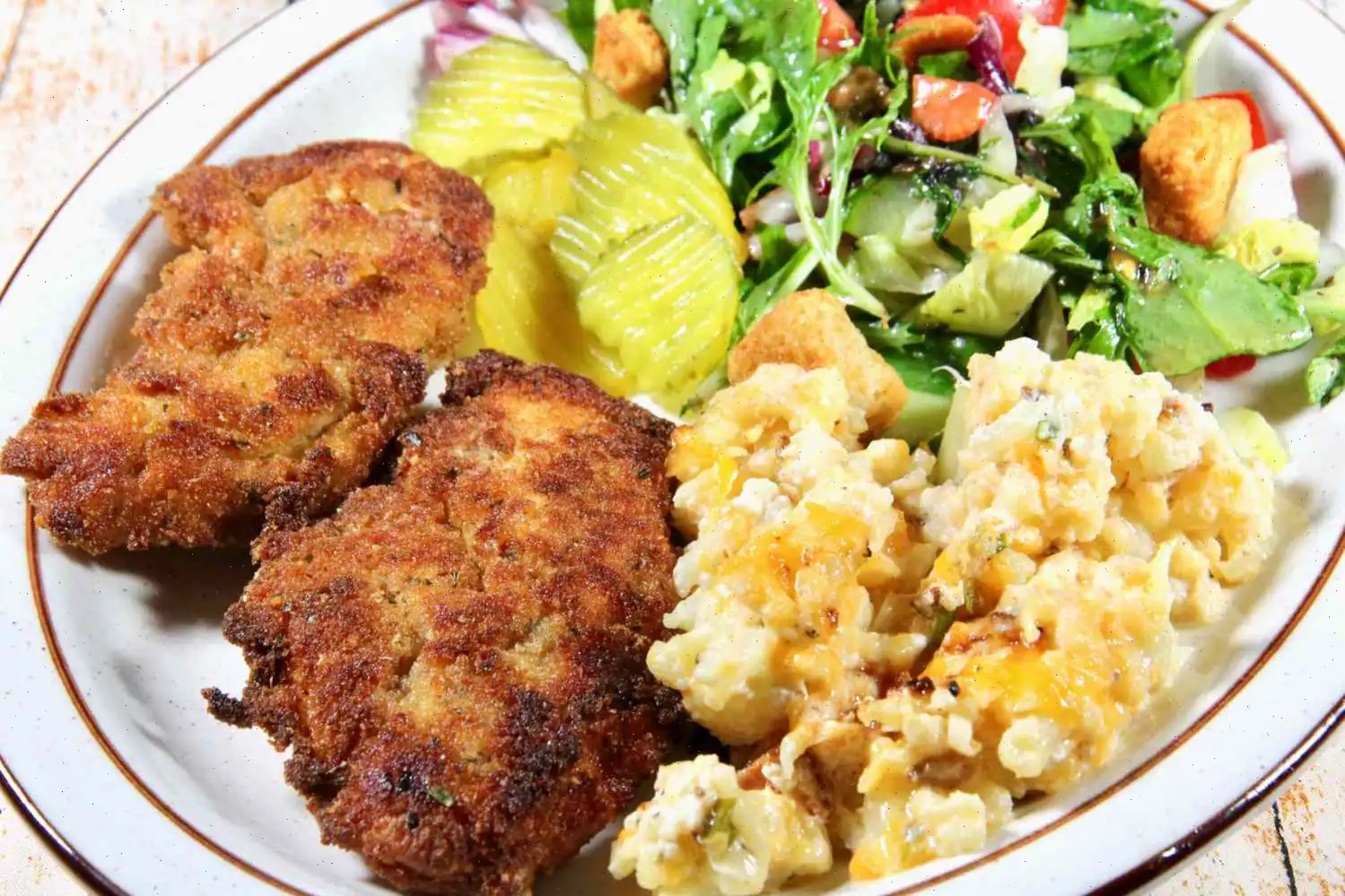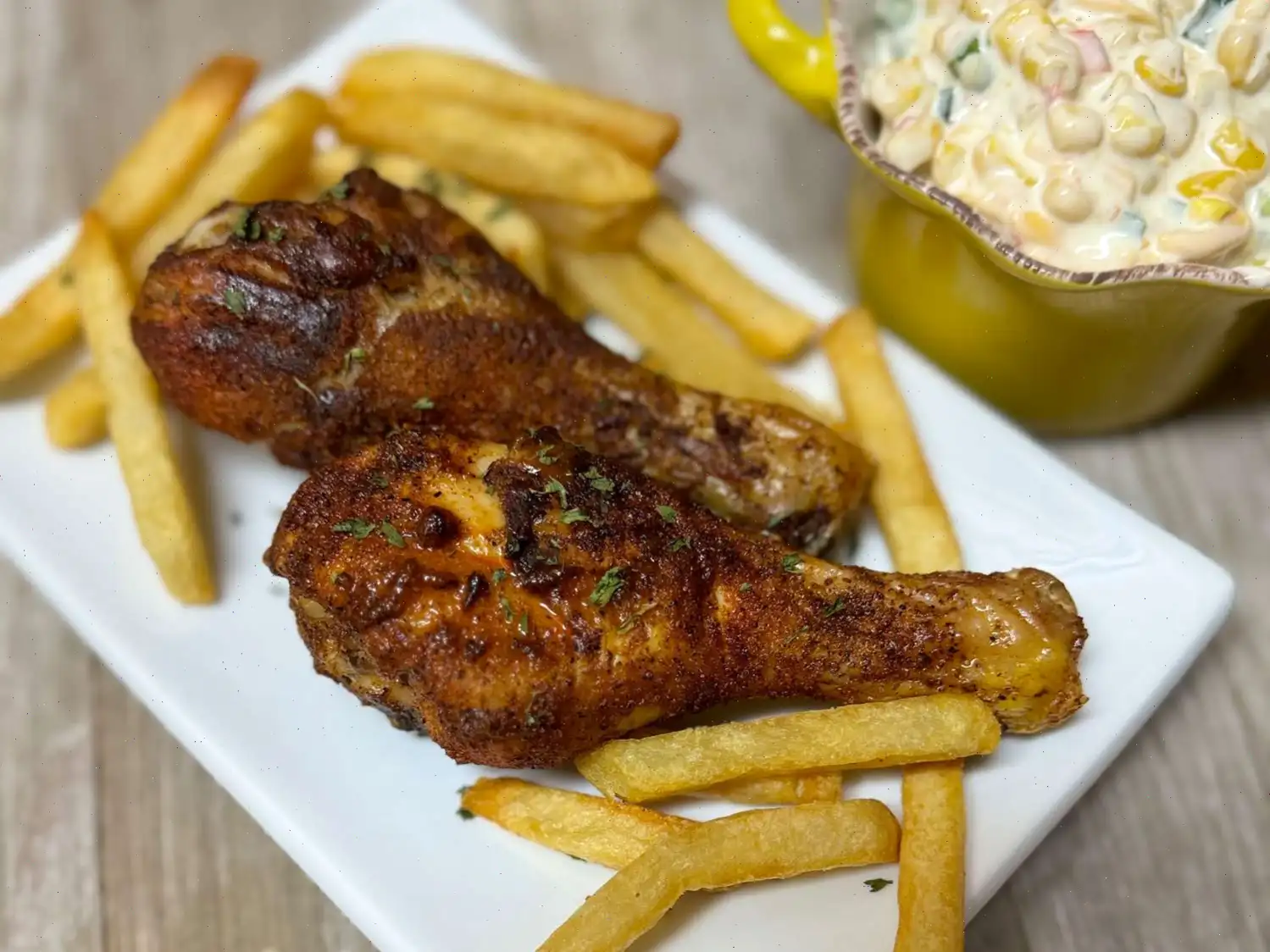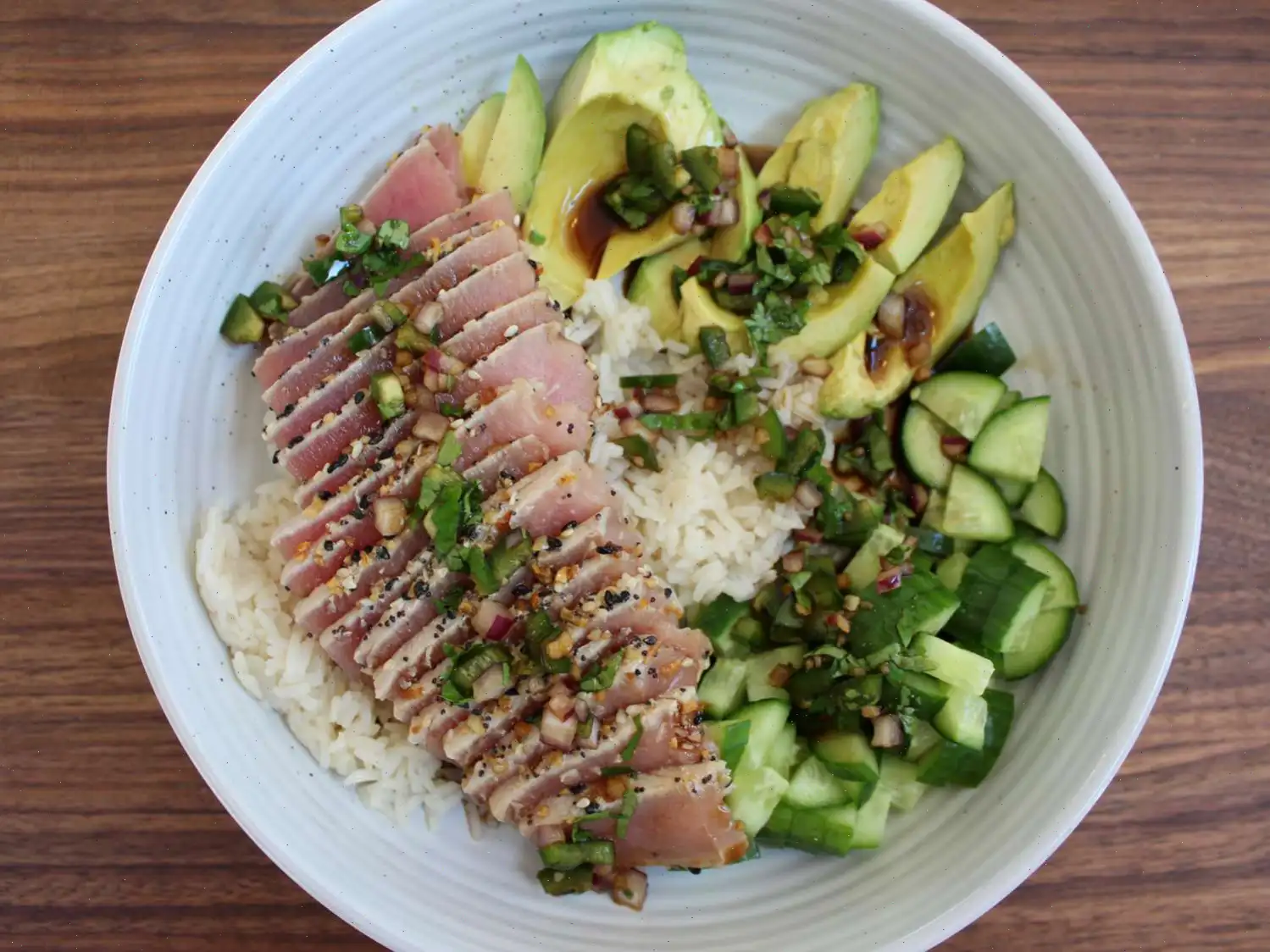
Copycat Honey-Mustard Chicken Tenders
Ingredients
- 2 large eggs
- 3 tablespoons honey mustard
- 1 pinch ground black pepper
- 1 cup all-purpose flour
- 1 tablespoon chicken seasoning blend
- 2 teaspoons cayenne pepper, or to taste
- 2 teaspoons crushed red pepper flakes
- 2 teaspoons seasoning salt
- Salt to taste
- 1 cup plain bread crumbs
- 2 teaspoons garlic salt
- 8 ounces chicken tenders, patted dry
- cup peanut oil
Directions
- In a bowl, whisk together the eggs, honey mustard, and ground black pepper.
- In another bowl, combine the flour, chicken seasoning blend, cayenne pepper, red pepper flakes, seasoning salt, and salt.
- In a third bowl, mix the bread crumbs and garlic salt.
- Take each chicken tender and dredge it first in the egg-honey mustard mixture, then in the seasoned flour mixture, followed by another dip in the egg-honey mustard mixture, and finally coat it in the bread crumb mixture. Aim for a medium coating on each piece.
- Heat the peanut oil in a skillet over medium-high heat. Once hot, fry the chicken tenders, turning them occasionally, until the breading is dark and crispy and the chicken is fully cooked (internal temperature should reach 165F), about 10 minutes per side.
Cook's Notes
- Instead of plain flour, you can use a seasoned flour mix such as Kentucky Kernel for added flavor.
- You can substitute sliced chicken breasts for chicken tenders if preferred.
- If you have any leftovers, they can be used to make a tasty chicken salad. Simply mix with mayonnaise, dill pickles, and season with salt and pepper.
Nutrition Facts (per serving)
| Calories | 791 |
|---|---|
| Total Fat | 20g (26% Daily Value) |
| Saturated Fat | 4g (22% Daily Value) |
| Cholesterol | 256mg (85% Daily Value) |
| Sodium | 3754mg (163% Daily Value) |
| Total Carbohydrate | 105g (38% Daily Value) |
| Dietary Fiber | 7g (24% Daily Value) |
| Total Sugars | 12g |
| Protein | 48g (95% Daily Value) |
| Vitamin C | 5mg (6% Daily Value) |
| Calcium | 202mg (16% Daily Value) |
| Iron | 9mg (48% Daily Value) |
| Potassium | 619mg (13% Daily Value) |
Note: Percent Daily Values are based on a 2,000 calorie diet. Your daily values may be higher or lower depending on your calorie needs. Nutritional information is based on available data for the ingredients used.
History of Honey-Mustard Chicken Tenders
The origins of chicken tenders as a dish trace back to the United States in the mid-20th century. Chicken tenders, or "chicken fingers," were first introduced in the 1950s as a convenient and kid-friendly finger food. The honey-mustard variant, however, is a more recent creation, often linked to fast food chains like Chick-fil-A, who popularized the sweet and tangy sauce combination.
The concept of a "copycat recipe" for honey-mustard chicken tenders became popular as people sought to recreate their favorite fast food dishes at home. With the rise of social media and food blogs, recipes for dishes like these spread quickly, allowing home cooks to enjoy fast food flavors without the need to visit a restaurant.
Regional Characteristics
Honey-mustard chicken tenders have become a favorite across the United States, though they can be particularly associated with Southern cuisine, where deep-frying is a central cooking method. In regions like the South and Midwest, breaded and fried chicken tenders are a beloved part of comfort food traditions.
What distinguishes honey-mustard chicken tenders from other regional fried chicken dishes is the use of honey mustarda perfect balance of sweetness and tanginess. While classic Southern fried chicken often relies on seasoning or buttermilk brines, the honey-mustard sauce offers an extra layer of flavor, making it a favorite dipping sauce for all ages.
How Does It Differ from Similar Dishes?
While chicken tenders are a staple across various cuisines, honey-mustard chicken tenders stand out due to their unique coating and sauce combination. Unlike the simple breading of standard fried chicken tenders, the honey-mustard version incorporates both a wet and dry breading process, ensuring a crispy and flavorful exterior. The honey mustard marinade adds a distinctive sweet-tangy flavor that sets it apart from other fried chicken dishes, such as buffalo or barbecue chicken tenders, which rely on spicier or smokier sauces.
Moreover, honey-mustard chicken tenders are not typically served with a spicy element, unlike spicy buffalo tenders. Instead, the honey mustard provides a mild sweetness and a hint of sharpness, making them an appealing option for both children and adults who prefer a gentler, more balanced flavor profile.
Where Are Honey-Mustard Chicken Tenders Usually Served?
Honey-mustard chicken tenders are commonly found on menus at fast food chains, diners, and casual restaurants. They are often served as a main dish or appetizer, paired with sides like French fries, coleslaw, or a simple salad. The dish is particularly popular in family-friendly restaurants, where it is a hit with both kids and adults.
In addition to fast food chains, you may also find honey-mustard chicken tenders at catered events or buffets, as their versatility and crowd-pleasing flavor make them an ideal choice for large gatherings. They are typically accompanied by a side of dipping sauces such as extra honey mustard or ranch dressing, giving diners the option to personalize the flavor to their taste.
Fun and Interesting Facts
- Although honey mustard is a common dipping sauce, its origins are often debated. Some food historians trace the creation of honey mustard back to European condiments, while others credit American chefs with developing the sweet-savory blend in the late 20th century.
- Chicken tenders are sometimes called "chicken fingers" or "chicken strips," but the term "tender" is used because it refers to the tenderloin cut of chicken, which is a particularly soft and juicy part of the bird.
- The concept of "copycat" recipes has exploded in popularity over the last decade, with home cooks trying to recreate restaurant-style dishes in their kitchens. Copycat honey-mustard chicken tenders are just one of many fast-food favorites that people love to make at home.
- Honey-mustard chicken tenders are so versatile that they can be served with a variety of dipping sauces, ranging from tangy barbecue to zesty ranch dressing. Some variations also feature a spicy kick with the addition of hot sauce or cayenne pepper.
- Did you know? If you have leftover honey-mustard chicken tenders, you can use them to make a quick and delicious chicken salad by simply adding mayonnaise, pickles, and your favorite seasonings!
FAQ about Copycat Honey-Mustard Chicken Tenders
Comments
Joseph Baker
03/12/2025 09:58:59 AM
I adjusted the seasoning in my chicken recipe by omitting the extra cayenne and red pepper flakes to avoid making it too spicy. The flavor turned out great with this modification. I have not been to Chick-Fil-A, so I cannot compare the taste. The proportions for the breading were way off - the recipe called for 8 oz of chicken, but the egg mixture was enough for 21 oz, which fit perfectly in my 12" pan. I reduced the flour and breadcrumbs by half, only needing an additional tablespoon of breadcrumbs to coat the extra chicken. Using a non-stick pan allowed me to reduce the oil to 2 tablespoons. I recommend cooking on medium heat, as the thick crust takes time to cook the chicken through, and high heat could burn the crust. My husband enjoyed it, and I will definitely make it again.








